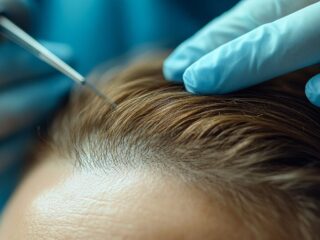
Are you curious why so many people choose braces or clear aligners?
Straight teeth do more than look good, they help you clean better, chew more evenly, breathe easier at night, and protect your gums.
If you have searched for “what is orthodontics,” “what is orthodontia,” or “orthodontics meaning,” this article clarifies the orthodontics definition. You will learn:
- What orthodontics is and how an orthodontist guides treatment
- Key health benefits of aligned teeth
- Common options from metal braces to clear aligners
- The step-by-step process, from your first visit to long-term care
- New trends that make treatment faster and more precise
Whether you plan braces for a child or explore adult care, this guide offers practical tips and clear answers. Let us begin by defining orthodontics and seeing who can benefit from a healthier bite.
What Is Orthodontics?
Orthodontics is a dental specialty that diagnoses and treats misaligned teeth and jaws. Often called orthodontia or dentofacial orthopedics, it focuses on creating balanced bites and healthy smiles.
Define orthodontics and orthodontia
Orthodontics, sometimes called orthodontia, defines the branch of dental care that realigns teeth and jaws. It uses braces, clear aligners, and other orthodontic appliances to guide tooth movement and jaw growth. Many people search for “orthodontics definition” or “define orthodontics” to learn more about this specialty.
Role and training of an orthodontist
An orthodontist is a dentist orthodontic specialist. After dental school, they complete two to three years of specialty training centered on facial growth, bone function, and tooth movement techniques. This training prepares them to diagnose bite issues and design personalized orthodontic treatment plans.
Who benefits from orthodontic care
Children benefit from an exam by age seven to catch bite problems while bones are still developing. Working with specialized pediatric dentists ensures visits are friendly and effective. Adults also seek orthodontic care to fix crowding, spacing, or jaw pain. Orthodontic alignment can prepare your mouth for other dental work, like tooth loss solutions. Anyone with alignment concerns can benefit.
Health Benefits of Straight Teeth
Aligning teeth with orthodontic care leads to many advantages:
Simpler brushing and flossing
With properly aligned teeth, you can remove plaque more easily. A floss threader glides without snagging, and an electric toothbrush reaches all surfaces.
Lower gum disease and cavities
Orthodontic correction reduces tight spaces that trap food and bacteria. This lowers your risk of gum inflammation and tooth decay, supporting overall oral health.
Enhanced chewing, digestion, and nutrition
An even bite helps you chew food thoroughly. Better chewing aids digestion and nutrient absorption, and can ease jaw strain.
Positive impact on sleep and breathing
Proper jaw alignment can open your airway, helping reduce snoring and mild sleep apnea. If you also grind teeth at night, wearing an NTI night guard adds protection.
Psychological and social benefits
A straight, healthy smile often boosts confidence and self-esteem. Feeling good about your teeth can improve work performance and social interactions.
Common Orthodontic Treatments
Traditional Metal and Ceramic Braces
Orthodontic braces use brackets, bands, and wires to move teeth gradually. Metal braces are durable. Ceramic braces use clear or tooth-colored brackets for a less noticeable fit. Both options work for mild to complex cases.
Clear Aligners
Clear aligners, such as Invisalign, are a series of removable trays you change every one to two weeks. You remove them to eat or brush, offering a discreet look without wires. Many patients appreciate this orthodontic solution.
Palatal Expanders and Retainers
Palatal Expanders
Expanders work best in younger patients. They apply gentle force to widen the upper jaw, creating space and often preventing the need for extractions.
Retainers
After braces or aligners, retainers hold teeth in their new position. You might use a removable clear retainer or a permanent thin wire bonded behind your teeth.
Treatment Duration and Aesthetics
Treatment time varies by case. Minor adjustments may finish in under a year. More complex moves can take over two years. Metal braces are most visible. Ceramic braces and clear aligners offer a lower profile. Retainers help keep your smile in place after treatment ends.
Orthodontic Treatment Process and Candidates
When to Schedule Your First Evaluation
The American Association of Orthodontists recommends an exam by age seven. Early checks can catch bite issues while growth is still happening. Adults should book an evaluation if they notice crowding, spacing, or jaw discomfort. Choosing a practice that offers private dentistry and orthodontic care ensures personalized attention and comfort.
Diagnostic Tools: X-rays and Digital Impressions
Orthodontists use panoramic and cephalometric X-rays to view bones and teeth alignment. Digital scans replace messy putty, creating accurate 3D models. These models guide your custom orthodontic plan.
Treatment Timeline and Compliance
Most orthodontic treatments last 12 to 24 months. Braces need monthly visits for wire adjustments. Clear aligners require at least 20 hours of wear per day. Following your orthodontist’s instructions helps keep your plan on track.
Aftercare: Retainers and Follow-up
Once active treatment ends, retainers hold teeth in their new positions. You may choose a removable clear retainer or a thin bonded wire. Regular check-ups with your orthodontist prevent unwanted shifts and protect your smile.
Innovations and Future Trends in Orthodontics
Digital and 3D-Printed Appliances
Digital scans and CAD/CAM design produce precise 3D-printed braces and aligners, replacing traditional molds and improving fit.
AI-Driven Treatment Simulations
AI software applies machine learning to analyze scans and predict tooth movement. Virtual previews show likely outcomes before treatment begins, improving communication between you and your orthodontist.
At-Home Aligner Monitoring
Smartphone apps let you submit progress photos from home. Your orthodontist reviews them remotely and gives feedback, cutting down on office visits and catching issues early.
Customized, Accelerated Treatment Protocols
New techniques, such as micro-osteoperforations and vibration devices, speed up tooth movement and safely shorten treatment time. Patients often prefer these faster, personalized plans.
Conclusion
Orthodontics does more than straighten teeth, it sets the stage for lifelong health and confidence. Key takeaways include:
- Aligned teeth make brushing and flossing simpler, lowering risks of cavities and gum disease.
- A balanced bite supports better chewing, digestion, breathing, and sleep quality.
- Orthodontic treatment options include metal or ceramic braces, clear aligners, expanders, and retainers.
- The process is clear and structured: evaluation, imaging, active movement, and retention.
- Innovations like 3D printing, AI treatment plans, and at-home monitoring speed care and improve precision.













